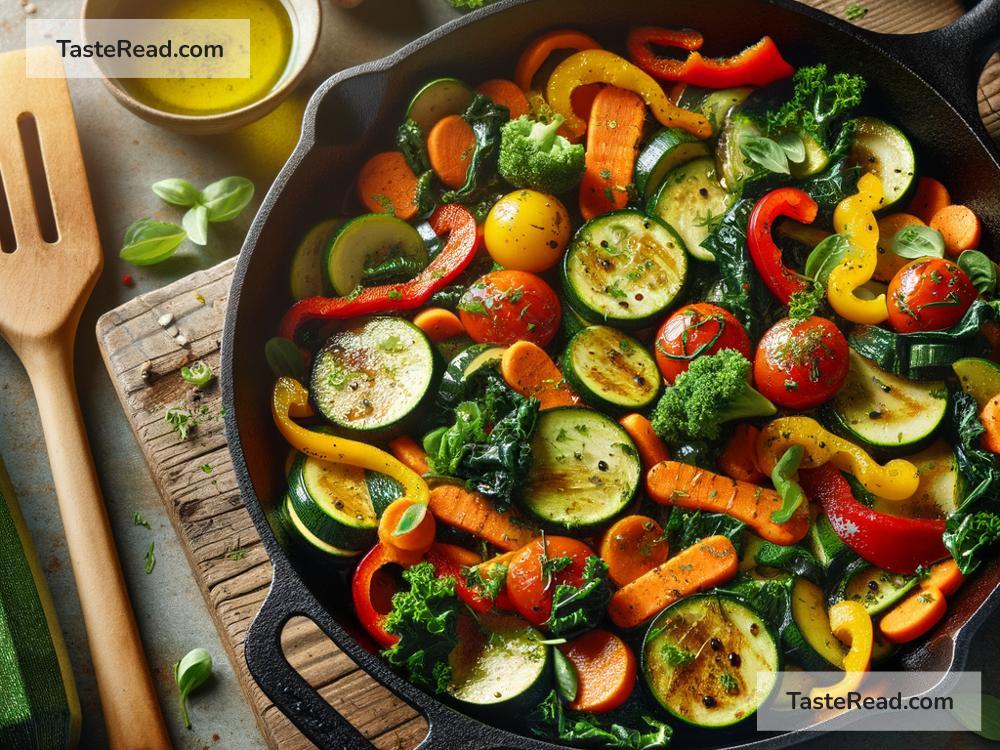How to Sauté Seasonal Vegetables: A Simple Guide
Eating seasonal vegetables is not only a great way to enjoy fresh, flavorful produce but also a budget-friendly and sustainable choice. Sautéing is a quick and healthy cooking method that brings out the natural flavors of vegetables while keeping them crisp and delicious. Whether you’re an experienced cook or a beginner in the kitchen, sautéing seasonal vegetables can quickly become your go-to technique for creating tasty, wholesome dishes.
In this blog, we’ll walk you through the process of sautéing seasonal vegetables step by step. We’ll cover what you need, how to choose your vegetables, and tips for making them taste amazing.
What Does It Mean to Sauté?
Sautéing is a cooking method where food is cooked quickly in a pan over medium to high heat using a small amount of oil or butter. The goal is to lightly cook the vegetables so they are tender on the inside yet slightly crisp on the outside. Compared to boiling or roasting, sautéing preserves nutrients and enhances the natural flavors of the vegetables.
Choosing Seasonal Vegetables
The secret to a delicious sauté is choosing the right vegetables, and seasonal options are always the best choice. They’re fresher, tastier, and often less expensive than out-of-season produce.
Here’s a quick guide to seasonal vegetables based on typical growing seasons:
- Spring: Asparagus, peas, spinach, carrots, radishes, green onions
- Summer: Zucchini, bell peppers, tomatoes, corn, eggplant
- Fall: Broccoli, kale, brussels sprouts, squash, mushrooms
- Winter: Sweet potatoes, cabbage, turnips, parsnips
Visit your local farmer’s market or grocery store to find what’s in season near you. Seasonal vegetables have better flavor and texture, which will make your sauté even more delicious.
What You’ll Need
Before you start sautéing, gather a few basic tools and ingredients:
Tools:
- A large skillet or frying pan (non-stick or stainless steel works best)
- A wooden spoon or spatula for stirring
- A knife and cutting board for chopping vegetables
Ingredients:
- Seasonal vegetables of your choice
- Cooking oil or butter (extra virgin olive oil, avocado oil, or unsalted butter are great options)
- Salt and pepper for basic seasoning
- Optional: garlic, onion, fresh herbs, or your favorite spices for extra flavor
How to Sauté Seasonal Vegetables
Let’s break the sautéing process into simple steps:
Step 1: Prep Your Vegetables
Wash your vegetables thoroughly under running water to remove dirt or debris. Use a sharp knife to chop the vegetables into evenly sized pieces. Smaller pieces cook faster and more evenly. For example, slice carrots into thin rounds, chop zucchini into half-moons, or cut bell peppers into strips.
If you’re using garlic or onions, chop or mince them before starting. These aromatic ingredients will add extra flavor to your sauté.
Step 2: Heat the Pan
Place your skillet or frying pan on the stove and turn the heat to medium or medium-high. Add about 1-2 tablespoons of cooking oil or butter to the pan. Once the oil starts to shimmer or the butter begins to bubble, your pan is ready.
Step 3: Add Aromatics
If you’re using garlic or onions, toss them into the pan first and sauté them for 1-2 minutes. Stir often to prevent them from burning. Aromatics create a flavorful base for your vegetables.
Step 4: Add Vegetables
Add your chopped vegetables to the pan in an even layer. If you’re cooking a variety of veggies, start with those that take longer to cook (such as carrots) before adding quicker-cooking vegetables (like spinach or zucchini). This ensures everything is done at the same time.
Step 5: Stir and Cook
Use your wooden spoon or spatula to stir the vegetables occasionally. This helps distribute heat evenly and prevents sticking. Depending on the type of vegetable, sautéing can take anywhere from 5 to 10 minutes. You’ll know they’re done when they’re slightly browned on the outside and tender when pierced with a fork.
Step 6: Season
Sprinkle salt and pepper over your vegetables as they cook. You can also add fresh herbs like parsley or dill, or spices such as paprika, cumin, or chili flakes for extra flavor. Adjust the seasoning to suit your taste.
Step 7: Serve and Enjoy
Once your vegetables are cooked, transfer them to a serving plate. Sautéed vegetables can be served as a side dish, mixed into pasta, or paired with rice or quinoa for a healthy meal. They can even be a topping for pizza or tossed into salads.
Tips for Perfectly Sautéed Vegetables
- Don’t overcrowd the pan: Too many vegetables in one pan can cause them to steam instead of sauté. Cook in smaller batches if needed.
- Use high-quality oil: A good-quality oil enhances the flavor and prevents sticking.
- Keep the heat steady: Medium to medium-high heat is ideal for sautéing. If the pan gets too hot, reduce the heat to prevent burning.
- Experiment with flavors: Try adding soy sauce, balsamic vinegar, or lemon juice at the end for extra zest.
Conclusion
Sautéing seasonal vegetables is an easy, healthy way to enjoy the freshest produce all year long. With just a few simple steps, you can create a flavorful dish that pairs perfectly with any meal. By choosing seasonal options and experimenting with different herbs and spices, you’ll have endless opportunities to turn humble vegetables into something truly delicious.
Next time you’re at the market, pick up some fresh, in-season veggies and give sautéing a try. You might just discover your new favorite cooking technique! Bon appétit!


